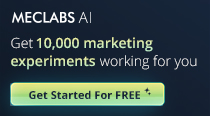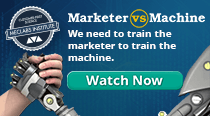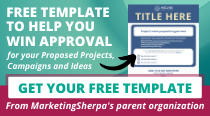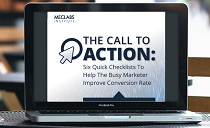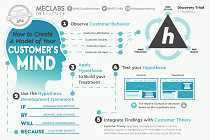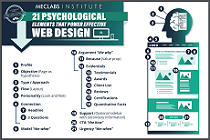June 18, 2002
Case Study
|
SUMMARY:
We have already had a bunch of reprint requests for this article since it came out on Tuesday. Seems like everyone wants to share it with their own private newsletter. Here is the scoop: late last year Kelley Blue Book, which is the most popular site for millions of US car buyers to use for research prior to their purchase, conducted a unique visitor metrics measurement test to learn where people were clicking and scrolling. The results were shocking. Big surprises. Hear all about them and how Kelley Blue Book was able to grow profits from data:
|
|
CASE STUDY
CHALLENGE
Ok, on the face of things Kelley Blue Book (KBB) would
not appear to have any challenges at all. The site, just named
(yet again) to Yahoo! Internet Life's annual list of "50 Most
Incredibly Useful Sites" gets loads of traffic from the very
people that advertisers with money really want to reach:
millions of car buyers intent on researching an upcoming
purchase.
In fact, VP Marketing & Business Development Stephen Henson
admits their biggest problem is one that most online publishers
would love to fret about: "We sell out. We don't have enough
inventory."
However, the issue was less about getting more traffic than
making the most of the traffic the site was already getting. How
do you get visitors to follow the path through your site that
makes you, and your partners, the most money?
In KBB's case, the most profitable path is their New Car Pricing
section. Carole Booth, Director of Web Operations, explains,
"People are about to spend $20,000-$30,000 or even more and they
want to get the proper research. We found ways to monetize this
path over time. We keep it free for consumers, but what we
ultimately hope they'll do is go off to one of our partners. So,
it's important to make sure visitors are tooling through, not
stopping, going back, or abandoning the site."
CAMPAIGN
KBB's home page is deceptively simple. It looks clean,
lean and obvious, but every element has been tested and tweaked
relentlessly.
For example, the Web team has tested as many as two-dozen
different ways to word each of the various text links on that
page.
Henson says, "The link that sends consumers to the free price
quote on new cars started out as 'Buy a New Car' because we
thought that's the action that's going to be taken. We found
when we softened it a bit, it got a better click through. People
felt like clicking and seeing what's behind the curtain with
wording that wasn't so immediate. We tested things like 'Online
Price Quote.' Then we added the word 'Free' to it and it tested
best of all the 20 different combinations."
This test, test, test culture meant that when a site conversion
improvement firm NetConversions approached KBB last November with
a few suggestions, they were eagerly received.
Booth explains, "They could track some things we couldn't, such
as if people click on white space, if they are scrolling or not
scrolling, and at what points did they stall or abandon the
site." Also, instead of having KBB's busy in-house staff
redesign the site to test things, NetConversions could create and
host test pages that only one out of every 1,000 visitors would
see. That way KBB could compare live control to test cells
easily.
During December 2001 and January 2002, KBB tested a variety of
tactics and studied page usage patterns to improve traffic to and
through its New Car Pricing section, including:
- Adding a drop down box with main navigational links to the
home page to supplement the navigation bar and text-description
links already there.
- Noting where visitors clicked on each page and whether it was
a clickable link or not. (Yes, surfers throughout the Web often
try to click through on things are not hotlinked.)
- Noting whether or not visitors scrolled down on critical
pages, and if they scrolled, how far.
- Testing verbiage, color and positioning of text on the
navigation bar and in the text links.
RESULTS
"The results that just made our jaws drop open," says Booth, "were about scrolling. When visitors get to their final
new car pricing report, we would display a nice detailed report
with everything you could want to know (i.e. destination charges,
colors, options, what's standard, etc.), and nobody was scrolling to
see the contents of this report!"
She continues,"25% of people didn’t scroll at all. Of the people
who did scroll, 90% only scrolled a few pixels and that was to
see the base price number, when below was all this crucial
information."
KBB's Web team redesigned this critical section completely
from one long scrollable page to a single starter page which
requires no scrolling, with a series of tabs for each additional
section. Booth says happily, "We launched it June 1st, and so
far pageviews have increased 62%. Those tabs are being clicked
on."
KBB's business development team also shared these results with
advertisers during their big quarterly presentations. Henson
says, "In general everybody's interested in how they can improve
the click through rate and branding. Whenever you've got hard
research as opposed to 'this is what we think' it's always viewed
in a positive light."
Skyscrapers (very long, vertical banners) have been the sexy
banner format of choice for advertisers on KBB and elsewhere for
the past year. KBB's scrolling test results helped many
advertisers rethink their creative to make these more effective.
Booth explains, "One of the mistakes they were making was putting
more important information at the bottom. Generally there was a
lot of white space, a picture of a car, and then the car brand
name, and then people click here was in the lower end. That
important information was below the fold! Advertisers didn't
realize how much people do not scroll, and people really may not
have seen a lower portion of your ad."
More Results:
- Click analysis revealed that about 50% of visitors were
clicking on small images of cars to view a pop-up of a larger
image. Booth says, "It was a you hit yourself on the forehead 'I
could have had a V8' kind of thing. Why aren't we monetizing
that?" KBB added text links to ecommerce partners within the
larger image pop-ups.
- Click analysis also revealed that visitors frequently clicked
on KBB's logo throughout the site, despite the fact that it
was not hotlinked to anything at the time. Henson says, "It's
becoming fairly common on the Web that when you click on the logo
you go back to the home page." Now their logo's hotlinked.
- Adding the drop-down navigation device to the site was
another definite success. Booth notes that even though your home
page already may have three redundant ways to navigate to the
same places, it does not hurt to add another. People prefer to
find their ways through Web sites by different means and you need
to please each visitor navigation-type.
- Tests on textlink wording and changing the color of certain
navigation items, showed minimal improvements, sometimes as
little as .7%. However, generally the changes were so easy to
make that these little incremental improvements were worth
working for.
http://www.kbb.com
http://www.netconversions.com


